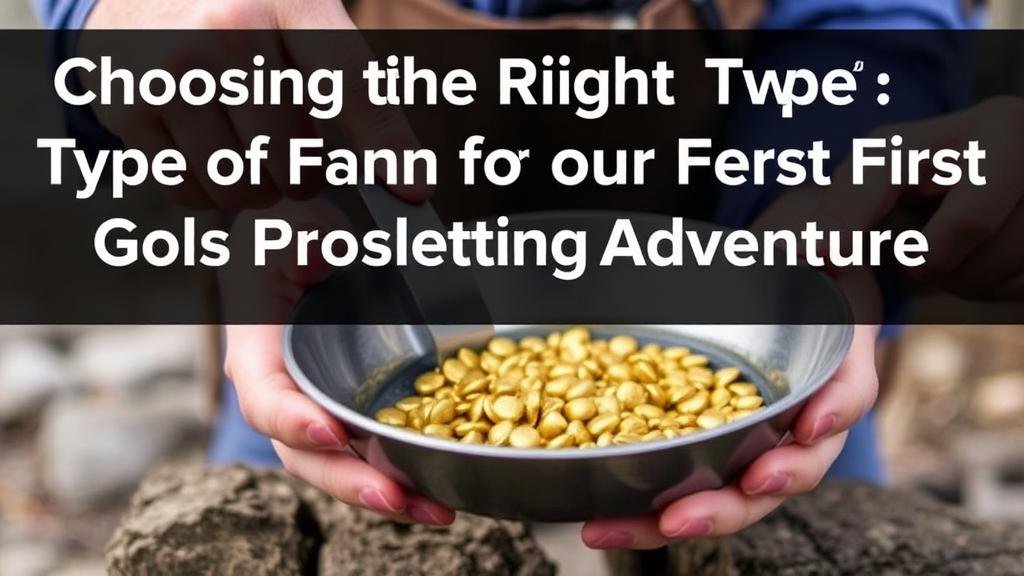Choosing the Right Type of Pan for Your First Gold Prospecting Adventure
Choosing the Right Type of Pan for Your First Gold Prospecting Adventure
Gold prospecting is an exciting and potentially lucrative outdoor activity. Whether you are a hobbyist or have ambitions of striking it rich, having the right tools is crucial, particularly when it comes to selecting a suitable pan. This article provides an in-depth guide to help you choose the right type of gold pan for your first adventure in prospecting.
Understanding Gold Pans
A gold pan is a shallow, wide basin used to separate gold from other materials. process, known as panning, relies on the density of gold, which allows it to sink to the bottom of the pan when water is added and the materials are agitated. Understanding the different types of gold pans available will help in making an informed decision.
Types of Gold Pans
- Plastic Gold Pans: Lightweight and affordable, plastic pans are ideal for beginners. They typically come in various colors, allowing for better visibility of gold flakes against the surface.
- Metal Gold Pans: Traditionally made from steel or aluminum, metal pans are durable but heavier. often come with a textured interior to help trap gold, though they can rust and corrode over time.
- Green Gold Pans: These are designed with riffles along the edge, providing improved gold retention. Their color contrasts with gold, making it easier to spot flecks during the panning process.
Size Matters: Choosing the Right Diameter
The diameter of your gold pan plays a significant role in its effectiveness. Common sizes include 10-inch, 12-inch, and 14-inch pans. As a guideline, beginners may find the following to be useful:
- 10-inch Pan: Ideal for sampling small areas and easy for carrying in a backpack.
- 12-inch Pan: A versatile option suitable for both beginners and experienced prospectors. It provides a balance between portability and capacity.
- 14-inch Pan: Best for larger quantities of material, but less portable. More suitable for a stationary setup.
Features to Look For
When selecting a gold pan, consider the following features that enhance efficiency and effectiveness:
- Riffles: These are small raised sections on the bottom of the pan that help trap gold particles as you shake and swirl the pan.
- Skimming Edges: Unique edges can facilitate easier removal of lighter material while keeping the gold in the pan.
- Color: Pans in vibrant colors like green make it easier to spot gold against the pans surface.
Real-World Applications
Understanding the distinctions in gold pan types can significantly impact your prospecting experience. For example, in the foothills of the Sierra Nevada mountains, where gold was first discovered in California, many prospectors began their journey with a simple plastic gold pan. This allowed them to quickly learn the techniques of panning without a significant financial investment.
Similarly, in Alaskas gold-rich river beds, seasoned prospectors often opt for larger metal pans to process larger quantities of material, maximizing their chances of finding gold. Each scenario demonstrates the importance of choosing the right pan based on your prospecting environment and intended use.
Addressing Common Concerns
Many prospective gold panners may have concerns about their choice of equipment. Common questions include:
- Is a larger pan better? Not necessarily; larger pans can be cumbersome and may not be conducive for beginners who are just learning the panning technique.
- Should I choose metal or plastic? While both have their advantages, beginners often find plastic pans easier to manage and clean.
Conclusion and Actionable Takeaways
Choosing the right gold pan can set the stage for a successful first gold prospecting adventure. By considering factors such as type, size, features, and your specific prospecting conditions, you can enhance your chances of finding gold while enjoying the outdoors.
In summary:
- For beginners, a lightweight 12-inch plastic pan with riffles is typically the best choice.
- Research the area you plan to prospect to determine the best pan type for that environment.
- Practice your panning technique before your adventure to build confidence.
With the right tools and knowledge, you can embark on your gold prospecting journey well-prepared. Happy panning!



